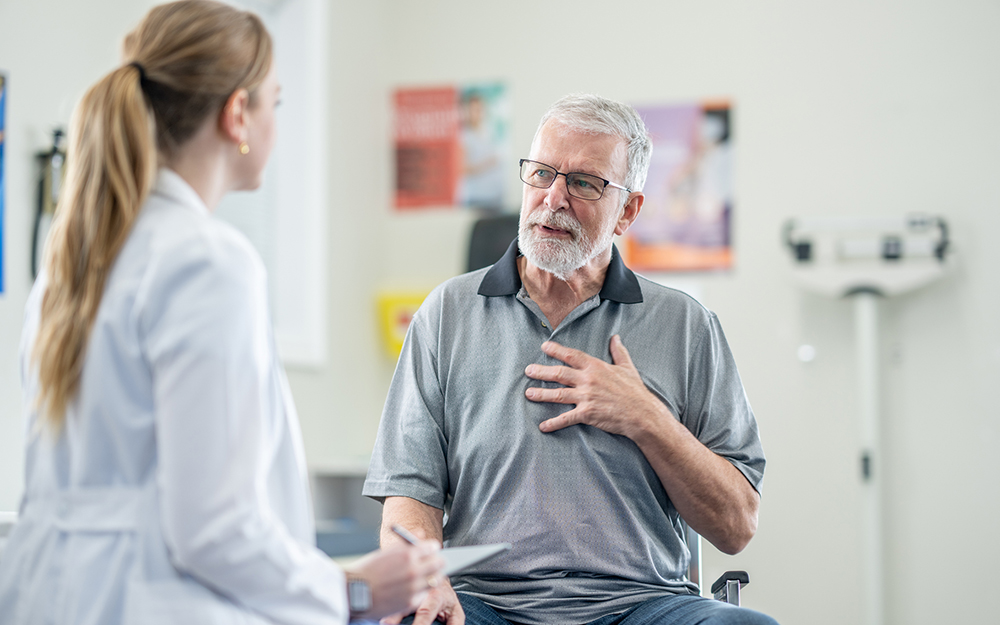Cedars-Sinai Blog
Sarcoidosis: The Benefits of a Team Approach
Oct 11, 2024 Jeremy Deutchman

Sarcoidosis defies easy diagnosis. The relatively rare immune system disease causes inflammation and microscopic structures called granulomas that can appear anywhere in the body and has features that may mimic infections or other diseases, which makes it challenging to identify.
Detecting sarcoidosis requires comprehensive analysis by doctors specially trained to recognize and treat this complex problem. This holistic, multidisciplinary approach is precisely what patients find at Cedars-Sinai’s Multidisciplinary Sarcoidosis Center, where they receive coordinated care from a diverse team of doctors.
“Diagnosing and then taking care of sarcoidosis patients is complicated,” said Elizabeth Frame, MD, a rheumatologist at Cedars-Sinai. “When patients come to a place like Cedars-Sinai, they benefit from access to specialists who have experience with the disease and who work together, ensuring they cover all the bases.”

Elizabeth W. Frame, MD
Destination for Collaboration
The exact cause of sarcoidosis is unknown, but research points to a combination of genetic and environmental factors.
“It’s as if a body thinks it’s under attack by an infection, and it then produces clusters of white blood cells—granulomas—to control it,” said Frame. “This inflammation can result in permanent scarring wherever it occurs, potentially damaging any organs in its path.”
Though sarcoidosis almost always appears in the lungs, it can affect nearly any organ, thus causing a wide range of symptoms such as rash, joint pain, brain inflammation, seizures, difficulties walking, leg weakness, liver abnormalities, eye pain and blindness, heart failure or high calcium levels.
"Very few people are trained in and comfortable with managing neurological or cardiac complications of sarcoidosis. Having a team of all available subspecialists working together is what sets our clinic apart."
“With so many organs involved, we need to look at the body as a whole. Otherwise, there’s a real risk patients won’t receive effective and efficient care,” Frame said.
At the Sarcoidosis Center, patients are seen by a highly coordinated team of doctors. Depending upon the patient’s unique presentation, this may include a pulmonologist, neurologist, cardiologist, rheumatologist, endocrinologist or other subspecialists.
These doctors collaborate on extensive testing to search for evidence of the illness and determine its scope. Tests may include imaging (such as an MRI of the brain and spinal cord or PET/CT scan); biopsies of affected tissues; blood work; and pulmonary function tests, among others.
Expert Advantage
In roughly two-thirds of people who develop sarcoidosis, the disease will resolve within two to three years.
“Steroids are often the first line of treatment, though there are other medications we use when the disease is severe or steroids are not tolerated. In some cases, no treatment is necessary,” Paula Barreras, MD, said, a doctor in the Sarcoidosis Center. “A thorough evaluation is what determines the right course of action, which is why so many sarcoidosis patients end up turning to Cedars-Sinai.”
In 5%-30% of diagnoses, the disease appears in the brain, spinal cord or peripheral nerves, which is called neurosarcoidosis. Barreras is the first fellowship-trained neurosarcoidosis doctor in the country and the only expert in Southern California.
“Neurosarcoidosis is a big deal because it can lead to serious disability and is a risk factor for mortality from the disease,” Barreras said. “Very few people are trained in, and comfortable with, managing neurological complications of sarcoidosis, so that really sets our clinic apart.”
An emphasis on communication among specialists is another key distinguishing feature of Cedars-Sinai’s approach to treating this multi-organ system disease successfully. The doctors at Cedars-Sinai who take care of sarcoidosis are in frequent contact with each other, and once a month they have a formal, multidisciplinary conference where clinicians, radiologists, nuclear radiologists and pathologists get together to discuss all the aspects of their patients’ cases—to review all the data and come up with a coordinated plan.
“There’s a lot about the disease we still don’t know, but what we do know is that, when everybody’s together in the same room, we’re much more likely to figure it out,” Frame said. “Talking to each other and making sure we’re working toward a common goal are critical to successful diagnosis and treatment.”




